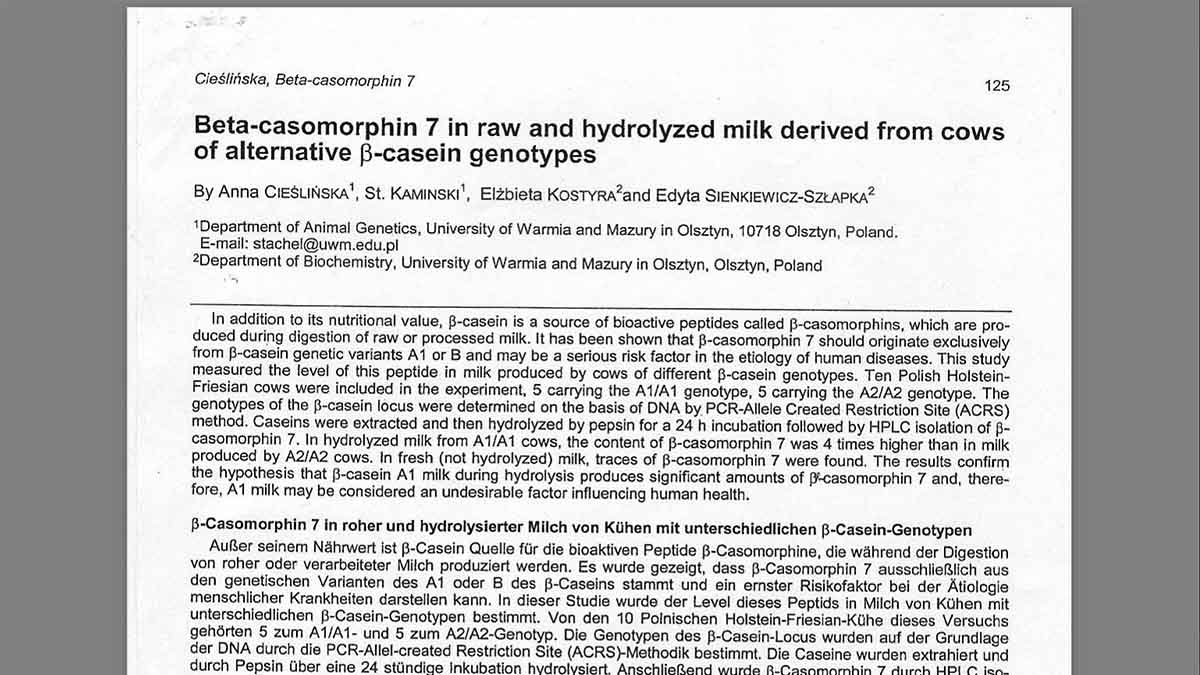A 2007 study published in Poland found that levels of BCM7, a potentially irritating compound, in A1 and A2 cow milk were the same when raw but different after pasteurization. A1 milk produced more BCM7 than A2 milk after subjected to heat treatment. Before pasteurization, both categories were about the same.
From the Raw Milk Institute:
The Effects of Pasteurization and BCM7 Protein Levels in Raw Milk
This peer reviewed and published 2007 study performed by Polish researchers found that raw A1 and A2 milk was the same when RAW with trace differences of the BCM7. However, when that same raw milk was processed with high heat, the processed A1 milk expressed high levels of BCM7 casomorphine.
This study strongly suggests that it is not the raw milk from A1 or A2 cows that is the problem because their milk is virtually the same when raw, it is the processing of the milk that is the problem. When A1 milk is heated the BCM 7 levels rise and potential issues become significant.
This also strongly suggests that the entire A1-A2 issue became a health matter in the last 80 years and has not been a health issue for thousands of years when raw milk was consumed all over the world with excellent health benefits.
A2 raw milk has increased in popularity over the past decade. Many consumers report that A2 milk does not irritate their gut, while conventional pasteurized induces a variety of. with claims of evading stomach issues related to dairy consumption, potentially due to its ability to withstand undesirable changes under pasteurization.
This also implies that A1 milk does not carry these problematic compounds while raw and unpasteurized, which provides some context to why so many raw milk consumers say raw milk alone has “cured their lactose intolerance,” without knowing whether or not the milk was A2.
